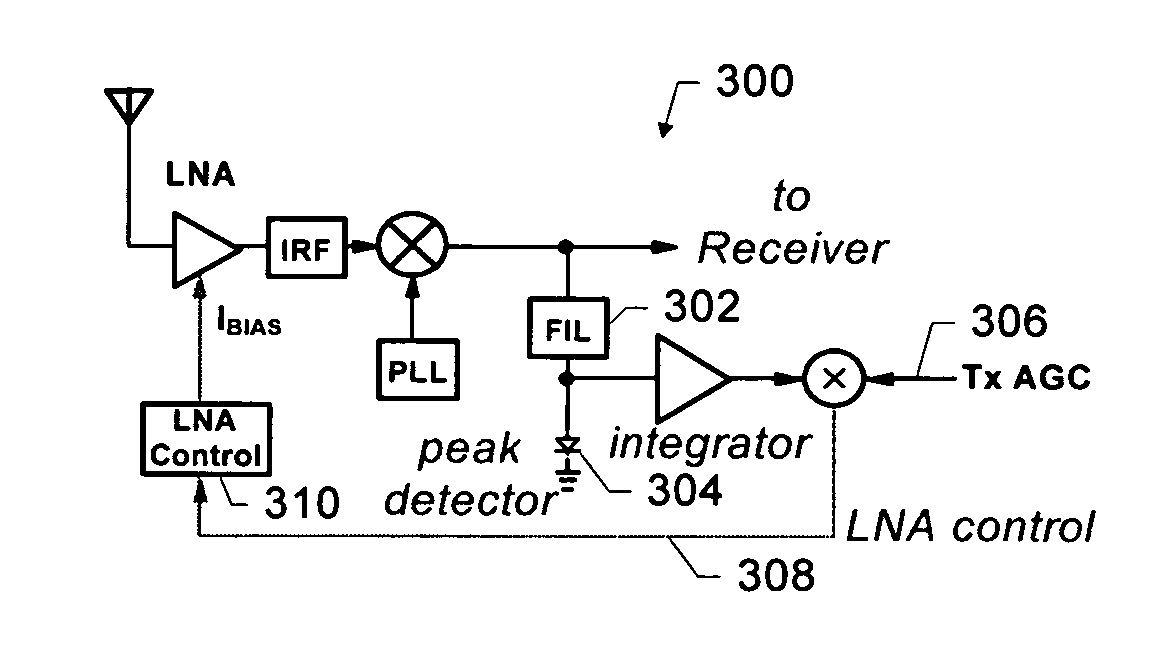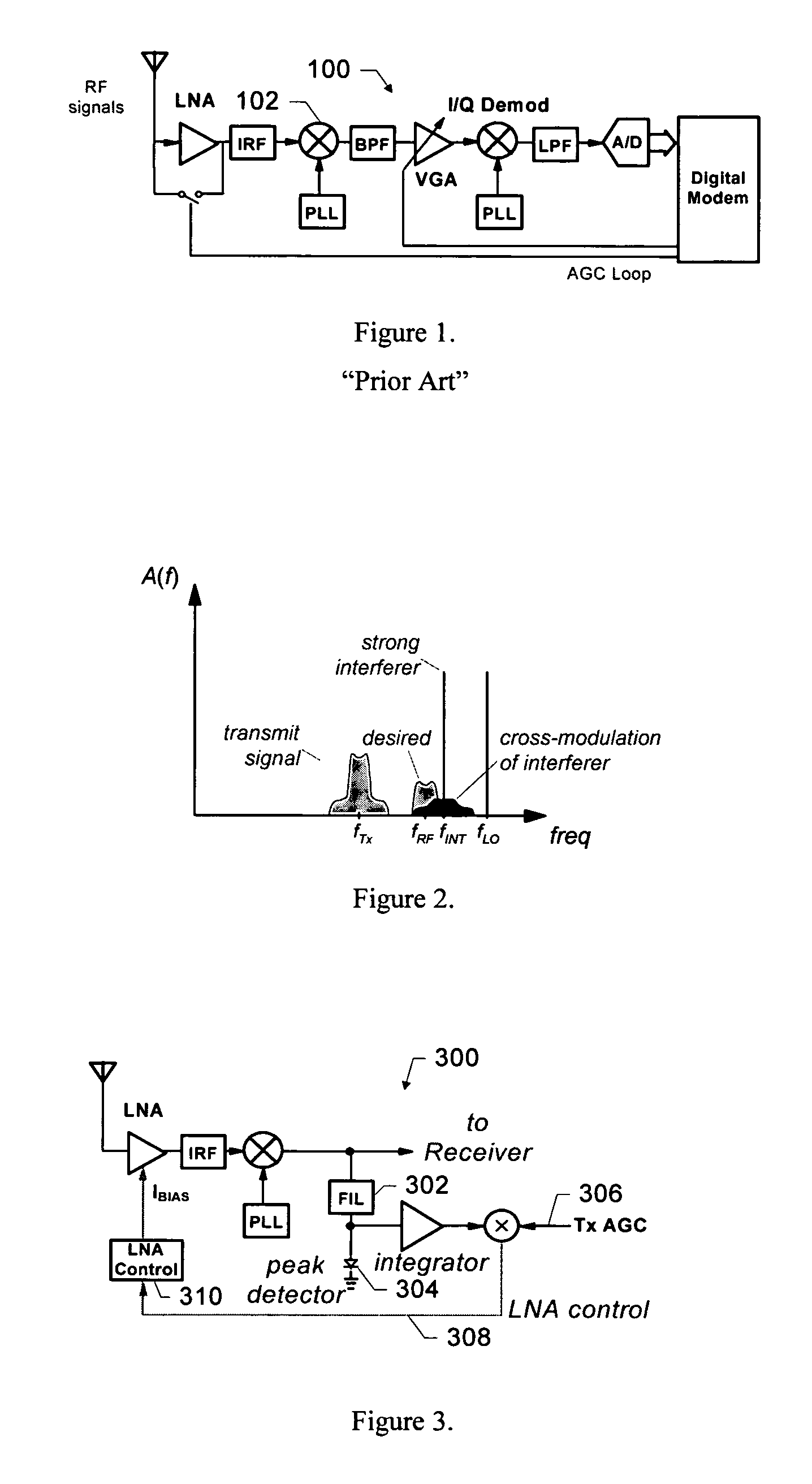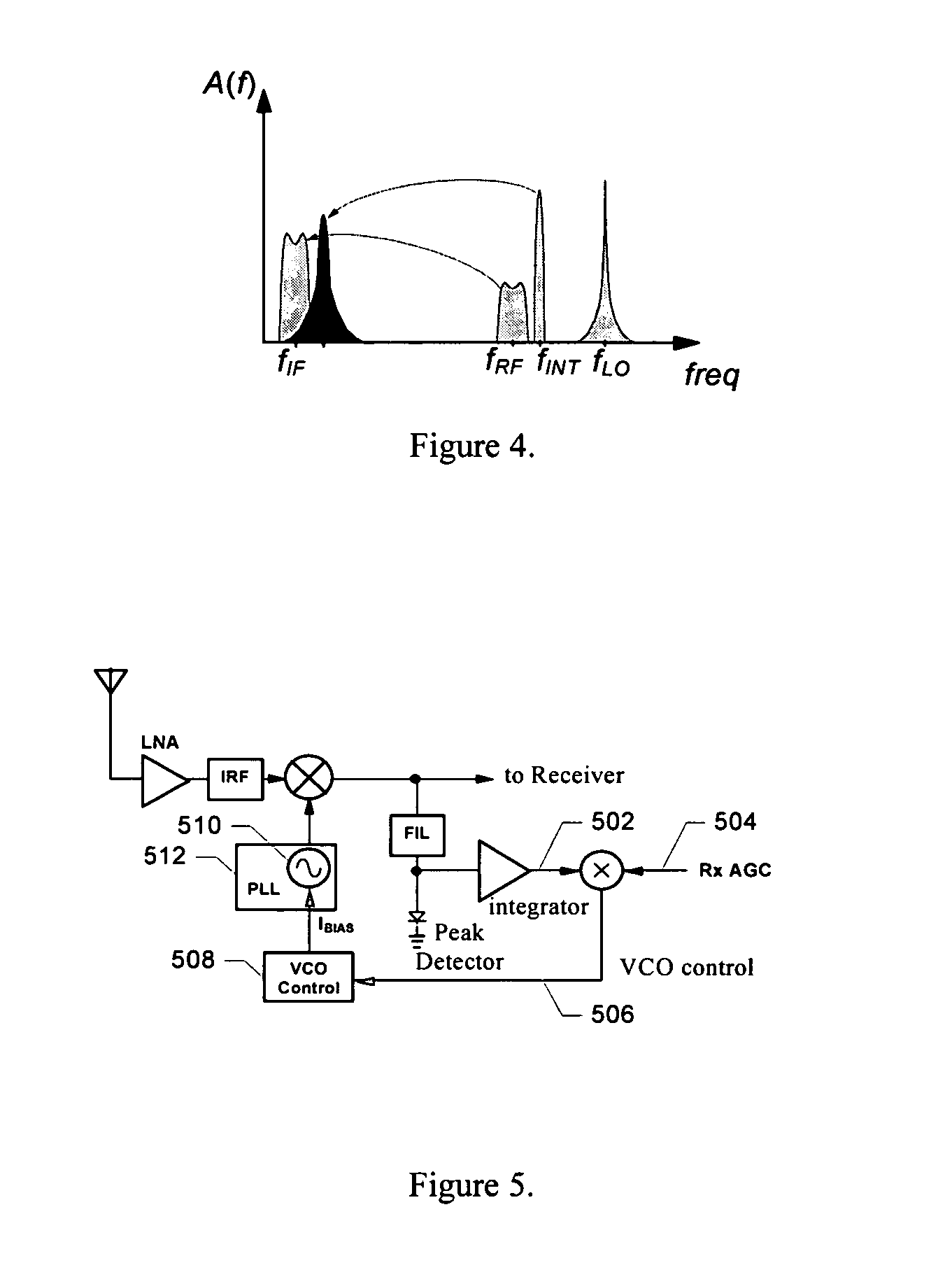Adaptive receiver system that adjusts to the level of interfering signals
a receiver system and receiver technology, applied in the field of radio receiver systems, can solve the problems that the key circuits of the radio receiver oftentimes require a high operating bias, and achieve the effect of reducing the cross modulation associated with the received rf signal
- Summary
- Abstract
- Description
- Claims
- Application Information
AI Technical Summary
Benefits of technology
Problems solved by technology
Method used
Image
Examples
Embodiment Construction
[0019]The present invention includes a radio receiver system that adjusts the operating bias of key circuits to minimize power consumption but still provides the needed performance. Thus, various embodiments included in the present invention are described in detail in the following text.
[0020]FIG. 2 shows a graph that illustrates the phenomenon of cross modulation in the LNA. This phenomenon—caused by nonlinear operation of the LNA—translates modulation from the transmit signal to an interfering signal. The performance of the radio receiver becomes degraded when the newly-modulated interfering signal overlaps the desired received signal. The linearity of the LNA depends on its operating bias; therefore, a high operating bias is needed to reduce cross modulation.
[0021]Cross modulation depends on the power of the transmit signal and the frequency spectrum of the received signal at the LNA input. The problem surfaces when the received signal (fRX) includes a strong interfering signal (...
PUM
 Login to View More
Login to View More Abstract
Description
Claims
Application Information
 Login to View More
Login to View More - R&D
- Intellectual Property
- Life Sciences
- Materials
- Tech Scout
- Unparalleled Data Quality
- Higher Quality Content
- 60% Fewer Hallucinations
Browse by: Latest US Patents, China's latest patents, Technical Efficacy Thesaurus, Application Domain, Technology Topic, Popular Technical Reports.
© 2025 PatSnap. All rights reserved.Legal|Privacy policy|Modern Slavery Act Transparency Statement|Sitemap|About US| Contact US: help@patsnap.com



